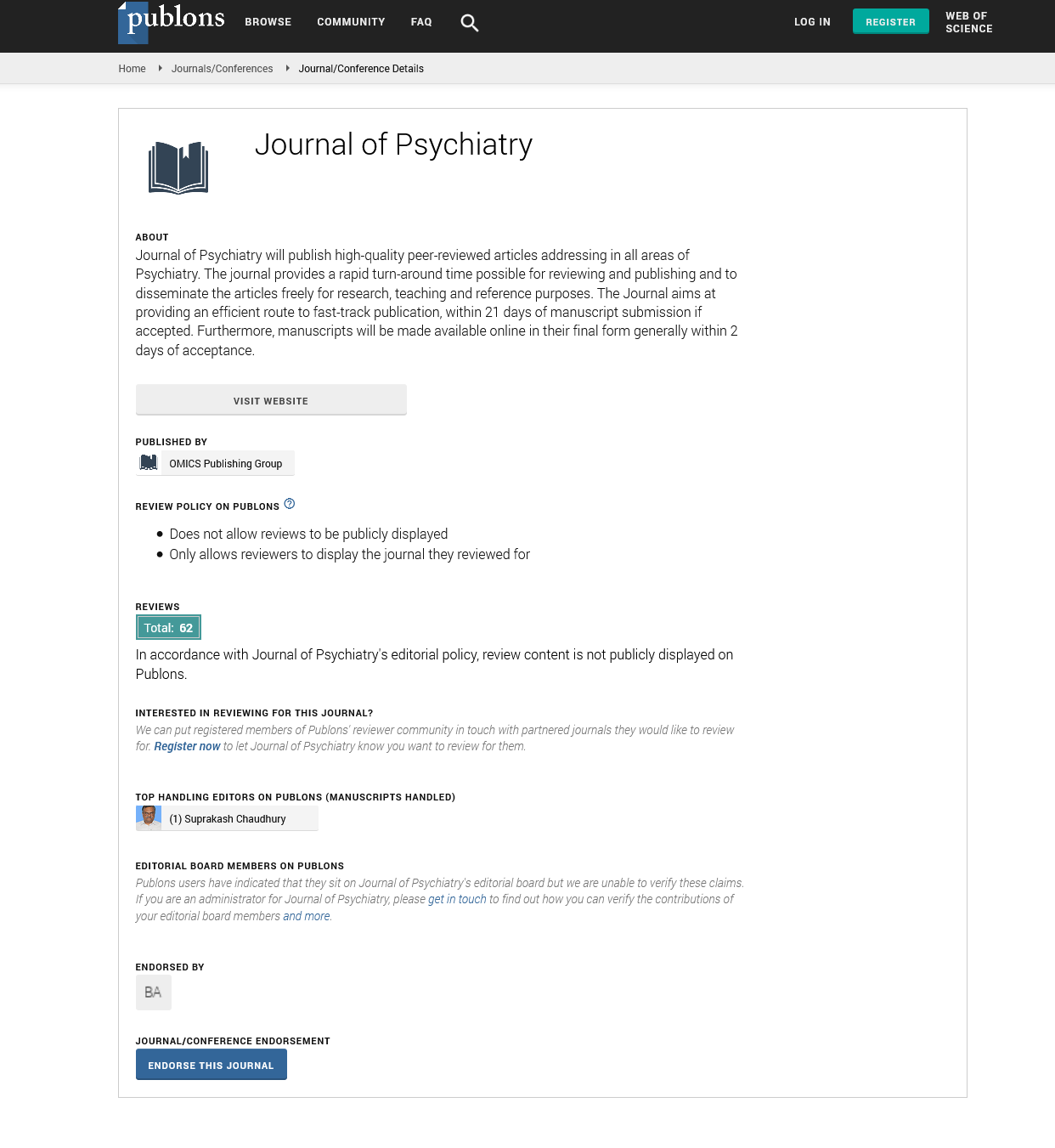Indexed In
- RefSeek
- Hamdard University
- EBSCO A-Z
- OCLC- WorldCat
- SWB online catalog
- Publons
- International committee of medical journals editors (ICMJE)
- Geneva Foundation for Medical Education and Research
Useful Links
Share This Page
Open Access Journals
- Agri and Aquaculture
- Biochemistry
- Bioinformatics & Systems Biology
- Business & Management
- Chemistry
- Clinical Sciences
- Engineering
- Food & Nutrition
- General Science
- Genetics & Molecular Biology
- Immunology & Microbiology
- Medical Sciences
- Neuroscience & Psychology
- Nursing & Health Care
- Pharmaceutical Sciences
Abstract
Treating opioid withdrawal with Buprenorphine in a community hospital ED: Rates of continued follow-up engagement with medication assisted treatment
Frank J Edwards
Study objective: In collaboration with an outpatient substance abuse treatment center, our community hospital emergency department (ED) developed a program to treat patients in opioid withdrawal with buprenorphine/naloxone in the ED and arrange timely referral (< 3 days) for medication assisted treatment (MAT).
We measured the continued engagement of subjects with MAT at 30 and 90 days, assessed for adverse medication effects in the form of precipitated withdrawal, and surveyed physician acceptance of the program at the end of its first year.
Methods: This is a prospective observational cohort study. Concomitant with a month-long media campaign to alert the public, we offered study enrollment to all patients presented to the ED in opioid withdrawal requesting treatment with buprenorphine and MAT follow-up from March 15, 2018 through March 15, 2019. There was no control group and patients who declined data tracking were still offered treatment.
Results: Of 80 potentially eligible subjects, 5 eloped before evaluation and were not enrolled, and 13 did not consent to data sharing. Fifty-four of the 62 patients enrolled in the study met inclusion criteria and were administered buprenorphine in the ED. Six of the 13 patients who did not agree to follow-up data sharing also met inclusion criteria and were given buprenorphine.
Conclusions: Such a program is feasible and safe in a community hospital ED and serves as an accelerated portal to addiction treatment for patients who might otherwise relapse into illicit opioid use with its attendant dangers.
Published Date: 2021-05-24;

